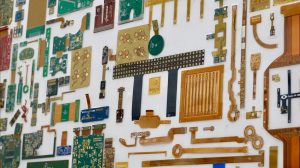traditional rigid or flexible PCBs
Rigid flex circuit boards combine the benefits of rigid PCBs with the flexibility of flex PCBs. They’re commonly used in laptop computers, smartphones and smart devices to provide a stable connection between components for improved performance and greater reliability. Rigid flex boards are able to handle a lot more stress than traditional rigid or flexible PCBs, and they can be designed to withstand bending, a common requirement for consumer electronics that need to be portable.
Rigid-flex PCBs also offer a combination of rigid and flexible sections that enable designers to incorporate a variety of components into the board. They can be flexed to fit over parts and provide direct connections between them, enabling for easier installation and increased functionality in the finished product. Rigid-flex PCBs can be designed to withstand a variety of environmental factors and conditions, including shock, vibration, humidity and temperature, making them a great choice for use in high-quality electronic products.

A major advantage of rigid flex circuit boards is that they eliminate the need for wire harnesses and connectors, which can increase the overall cost of the final product. rigid flex board integrate all of their electrical connections into the PCB itself, which saves time and money during assembly. Additionally, fewer additives and manual assembly processes are needed, which can also reduce production costs.
How are rigid flex boards different from traditional rigid or flexible PCBs
While rigid flex boards have many advantages over other types of PCBs, they do come with a few challenges. These include the need for careful design, fabrication and assembly to ensure that the circuitry functions properly and safely. Additionally, proper consideration must be given to the layer transition between rigid and flex sections of the PCB. Improper layer transition can result in impedance mismatches and signal degradation.
Using the right materials and manufacturing processes is essential for creating a rigid-flex PCB that will work well in your device. For instance, you’ll need to use a copper cladding material that’s compatible with your application. This will help to prevent heat transfer problems, which can cause the rigid-flex board to fail prematurely.
Another challenge is that rigid-flex PCBs require specialized lamination, which can increase manufacturing costs compared to other types of PCBs. This is because the board must be laminated with a special cover lay that provides proper adhesion between the rigid and flex sections of the circuit. This can be a costly process, especially for low-volume production runs.
Moreover, rigid-flex PCBs need to be tested and verified during the production process to ensure that they comply with all manufacturer rules. They must be free of defects such as cracks, breaks and shorts. These tests are typically conducted using flying probes or grid testing systems. Lastly, the board must be cut from the production panel using hydraulic punching methods or specialized blanking knives. The edges of the rigid-flex PCB should be rounded to prevent excessive tearing and improve the durability of the board. You can use a detailed calculator like the one offered by PCBway to find out how much your rigid-flex PCB design will cost you.